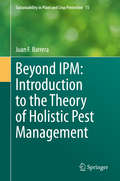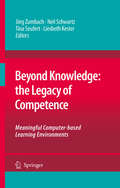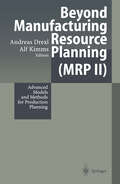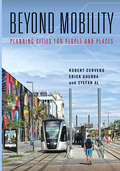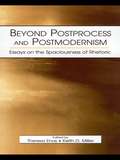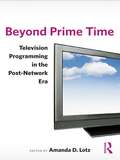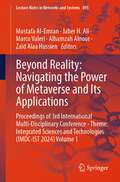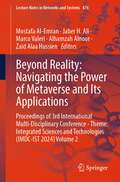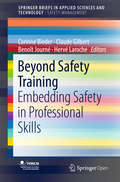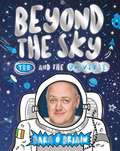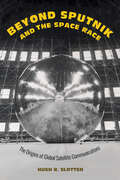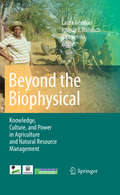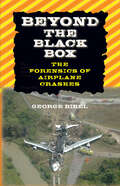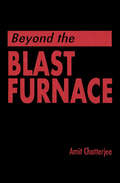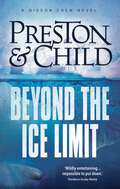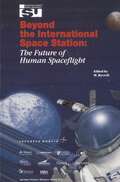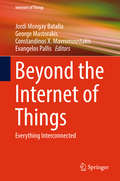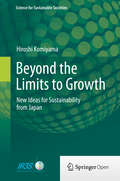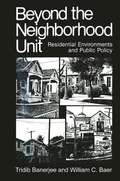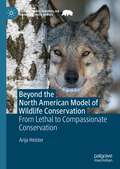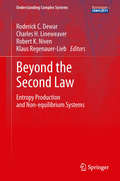- Table View
- List View
Beyond IPM: Introduction to the Theory of Holistic Pest Management (Sustainability in Plant and Crop Protection #15)
by Juan F. BarreraAbout 15 years ago, we asked ourselves why the methods developed by the research institutions for the management of pests were almost not used by small landholder farmers. It seemed obvious to us that conventional pest control –called “Integrated Pest Management”– was based on a reductionist approach. In reviewing the literature on the subject, we found that our concern was not new or unique. The agreement of some authors with our ideas reinforced our efforts to find a holistic approach to pest management. We took two central ideas to develop the holistic approach: First, pest management actions must put the farmer at the center of the system. Second, pest management must consider not only both pests but the other important components of the system in question. This approach based on the farmers and the systems in which they are immersed, is called “Holistic Pest Management” or HPM. In this book, I present the philosophy and practice of HPM, a new paradigm of pest management.
Beyond Knowledge: Meaningful Computer-based Learning Environments
by Jörg Zumbach Liesbeth Kester Neil Schwartz Tina SeufertThe edited and peer reviewed volume presents selected papers of the conference “Beyond knowlegde: the legacy of competence” organized by EARLI SIG Learning and Instruction with Computers in cooperation with SIG Instructional Design. It reflects the current state-of-the-art work of scholars worldwide within the area of learning and instruction with computers. Mainly, areas of computer-based learning environments supporting competence-focused knowledge acquisition but also foundational scientific work are addressed. More specific, contents cover cognitive processes in hypermedia and multimedia learning, social issues in computer-supported collaborative learning, motivation and emotion in Blended Learning and e-Learning.
Beyond Manufacturing Resource Planning (MRP II): Advanced Models and Methods for Production Planning
by Andreas Drexl Alf KimmsThe logic of Manufacturing Resource Planning (MRP II) is im plemented in most commercial production planning software tools and is commonly accepted by practitioners. However, these peo ple are not satisfied with production planning and complain about long lead times, high work-in-process, and backlogging. As many researchers have pointed out, the reason for these shortcomings is inherent to the methods that are used. The research community is thus eager to find more sophisticated approaches. This book is an attempt to compile some state-of-the-art work in the field of production planning research. It includes mate rial that somehow dominates the existing MRP II concept. 15 ar ticles written by 36 authors from 10 countries cover many aspects related to MRP II. All papers went through a single-blind refere eing process before they were selected for being published in this book. When we received papers for this issue, we discovered that MRP II is a topic about which not only management scientists show interest. As the list of authors proves, industrial engineers, computer scientists, and-operations researchers from academia as well as practitioners have contributed to this book. This, we hope, makes the book of value for a broad audience. We thank all authors who submitted papers. And, we are in debted to Dr. Werner Muller from Springer for his support in this book project.
Beyond Mobility: Planning Cities for People and Places
by Robert Cervero Erick Guerra Stefan AlThis volume is about prioritizing the needs and aspirations of people and the creation of great places. This is as important, if not more important, than expediting movement. A stronger focus on accessibility and place creates better communities, environments, and economies. Rethinking how projects are planned and designed in cities and suburbs needs to occur at multiple geographic scales, from micro-designs (such as parklets), corridors (such as road-diets), and city-regions (such as an urban growth boundary). It can involve both software (a shift in policy) and hardware (a physical transformation). Moving beyond mobility must also be socially inclusive, a significant challenge in light of the price increases that typically result from creating higher quality urban spaces.
Beyond Postprocess and Postmodernism: Essays on the Spaciousness of Rhetoric
by Theresa Enos Keith D. MillerIn this collection of original essays, editors Theresa Enos and Keith D. Miller join their contributors--a veritable "who's who" in composition scholarship--in seeking to illuminate and complicate many of the tensions present in the field of rhetoric and composition. The contributions included here emphasize key issues in past and present work, setting the stage for future thought and study. The book also honors the late Jim Corder, a major figure in the development of the rhetoric and composition discipline. In the spirit of Corder's unfinished work, the contributors to this volume absorb, probe, stretch, redefine, and interrogate classical, modern, and postmodern rhetorics--and challenge their limitations. Beyond Postprocess and Postmodernism: Essays on the Spaciousness of Rhetoric will be of interest to scholars, teachers, and students in rhetoric and composition, English, and communication studies. Offering a provocative discussion of postprocess composition theories and pedagogies and postmodern rhetorics, as well as the first thorough consideration of Jim Corder's contributions, this work is certain to influence the course of future study and research.
Beyond Postprocess and Postmodernism: Essays on the Spaciousness of Rhetoric
by Theresa Jarnagi Enos Keith D. Miller Jill McCrackenIn this collection of original essays, editors Theresa Enos and Keith D. Miller join their contributors--a veritable "who's who" in composition scholarship--in seeking to illuminate and complicate many of the tensions present in the field of rhetoric and composition. The contributions included here emphasize key issues in past and present work, setting the stage for future thought and study. The book also honors the late Jim Corder, a major figure in the development of the rhetoric and composition discipline. In the spirit of Corder's unfinished work, the contributors to this volume absorb, probe, stretch, redefine, and interrogate classical, modern, and postmodern rhetorics--and challenge their limitations. Beyond Postprocess and Postmodernism: Essays on the Spaciousness of Rhetoric will be of interest to scholars, teachers, and students in rhetoric and composition, English, and communication studies. Offering a provocative discussion of postprocess composition theories and pedagogies and postmodern rhetorics, as well as the first thorough consideration of Jim Corder's contributions, this work is certain to influence the course of future study and research.
Beyond Prime Time: Television Programming in the Post-Network Era
by Amanda LotzDaytime soap operas. Evening news. Late-night talk shows. Television has long been defined by its daily schedule, and the viewing habits that develop around it. Technologies like DVRs, iPods, and online video have freed audiences from rigid time constraints—we no longer have to wait for a program to be "on" to watch it—but scheduling still plays a major role in the production of television. Prime-time series programming between 8:00 and 11:00 p.m. has dominated most critical discussion about television since its beginnings, but Beyond Prime Time brings together leading television scholars to explore how shifts in television’s industrial practices and new media convergence have affected the other 80% of the viewing day. The contributors explore a broad range of non-prime-time forms including talk shows, soap operas, news, syndication, and children’s programs, non-series forms such as sports and made-for-television movies, as well as entities such as local affiliate stations and public television. Importantly, all of these forms rely on norms of production, financing, and viewer habits that distinguish them from the practices common among prime-time series and often from each other. Each of the chapters examines how the production practices and textual strategies of a particular programming form have shifted in response to sweeping industry changes, together telling the story of a medium in transition at the beginning of the twenty-first century. Contributors: Sarah Banet-Weiser, Victoria E. Johnson, Jeffrey P. Jones, Derek Kompare, Elana Levine, Amanda D. Lotz, Jonathan Nichols-Pethick, Laurie Ouellette, Erin Copple Smith
Beyond Prime Time: Television Programming in the Post-Network Era
by Amanda LotzDaytime soap operas. Evening news. Late-night talk shows. Television has long been defined by its daily schedule, and the viewing habits that develop around it. Technologies like DVRs, iPods, and online video have freed audiences from rigid time constraints—we no longer have to wait for a program to be "on" to watch it—but scheduling still plays a major role in the production of television. Prime-time series programming between 8:00 and 11:00 p.m. has dominated most critical discussion about television since its beginnings, but Beyond Prime Time brings together leading television scholars to explore how shifts in television’s industrial practices and new media convergence have affected the other 80% of the viewing day. The contributors explore a broad range of non-prime-time forms including talk shows, soap operas, news, syndication, and children’s programs, non-series forms such as sports and made-for-television movies, as well as entities such as local affiliate stations and public television. Importantly, all of these forms rely on norms of production, financing, and viewer habits that distinguish them from the practices common among prime-time series and often from each other. Each of the chapters examines how the production practices and textual strategies of a particular programming form have shifted in response to sweeping industry changes, together telling the story of a medium in transition at the beginning of the twenty-first century. Contributors: Sarah Banet-Weiser, Victoria E. Johnson, Jeffrey P. Jones, Derek Kompare, Elana Levine, Amanda D. Lotz, Jonathan Nichols-Pethick, Laurie Ouellette, Erin Copple Smith
Beyond Reality: Proceedings of 3rd International Multi-Disciplinary Conference - Theme: Integrated Sciences and Technologies (IMDC-IST 2024) Volume 1 (Lecture Notes in Networks and Systems #895)
by Mostafa Al-Emran Jaber H. Ali Marco Valeri Alhamzah Alnoor Zaid Alaa HussienThis book addresses recent research trends concerning the role of the Metaverse in advancing the education and finance sectors from various perspectives. These trends are explored through multiple case studies employing diverse analytical approaches. The chapters aim to aid scholars and postgraduate students in pursuing future research in this domain and identifying potential developments in Metaverse applications.
Beyond Reality: Proceedings of 3rd International Multi-Disciplinary Conference - Theme: Integrated Sciences and Technologies (IMDC-IST 2024) Volume 2 (Lecture Notes in Networks and Systems #876)
by Mostafa Al-Emran Jaber H. Ali Marco Valeri Alhamzah Alnoor Zaid Alaa HussienThis book explores current research trends in the context of the Metaverse’s impact on the tourism and marketing industries while delving into some case studies on education and finance. These trends are examined through various case studies utilizing distinct analytical methods. The chapters are expected to support scholars and postgraduate students in furthering their research in this field and in recognizing prospective advancements in the applications of the Metaverse.
Beyond Safety Training: Embedding Safety in Professional Skills (SpringerBriefs in Applied Sciences and Technology)
by Corinne Bieder Claude Gilbert Benoît Journé Hervé LarocheThis book is open access under a CC BY 4.0 license.This book investigates why, despite more and more resources devoted to safety training, expectations are not entirely met, particularly in the industrial sectors that have already achieved a high safety level. It not only reflects the most precious viewpoints of experts from different disciplines, different countries, with experiences in various industrial fields at the cutting edge of theories and practices in terms of safety, professionalization and their relationships. It also consolidates the positioning of the Foundation for an Industrial Safety Culture, highlighting what is currently considered at stake in terms of safety training, taking into account the system of constraints the different stakeholders are submitted to. It reports some success stories as well as elements which could explain the observed plateau in terms of outcome. It identifies some levers for evolution for at-risk industry and outlines a possible research agenda to go further with experimental solutions.
Beyond The Sky
by Dara BriainSo you want to go into space? WHY?! (No, really - it's sort of a terrible idea. We humans are perfectly designed for life on Earth. We can walk around, breathe, drink water, eat vegetables, read books, not get poisoned or crushed to death when we go outside - it's lovely right where we are.) Not convinced? GOOD! People have been dreaming about space travel for centuries - there's something amazing about the idea of leaving our planet behind and setting out to explore the Universe - there's so much we still don't know. UK and Ireland's best-loved comedian Dara O Briain takes you on a journey from the safety of your comfiest chair to the furthest reaches of space (and beyond!)
Beyond Sputnik and the Space Race: The Origins of Global Satellite Communications
by Hugh R. SlottenA fascinating account of how the United States established the first global satellite communications system to project geopolitical leadership during the Cold War.On July 20, 1969, the world watched, spellbound, as NASA astronaut Neil Armstrong stepped off the Apollo 11 lunar module to walk on the moon. NASA estimated that 20 percent of the planet's population—nearly 650 million people—watched the moon landing footage, which was made possible by the first global satellite communications system, the International Telecommunications Satellite Organization, or Intelsat. In Beyond Sputnik and the Space Race, Hugh R. Slotten analyzes the efforts of US officials, especially during the Kennedy administration, to establish this satellite communication system and open it to all countries of the world. Locked in competition with the Soviet Union for both military superiority and international prestige, President John F. Kennedy overturned the Eisenhower administration's policy of treating satellite communications as simply an extension of traditionally regulated telecommunications. Instead of allowing private communications companies to set up separate systems that would likely primarily serve major "developed" regions, the new administration decided to take the lead in establishing a single world system. Explaining how the East-West Cold War conflict became increasingly influenced by North-South tensions during this period, Slotten highlights the growing importance of non-aligned countries in Asia, Latin America, and Africa. He also underscores the importance of a political economy of "total Cold War" in which many crucial aspects of US society became tied to imperatives of national security and geopolitical prestige. Drawing on detailed archival records to examine the full range of decisionmakers involved in the Intelsat system, Beyond Sputnik and the Space Race spotlights mid- and lower-level agency staff usually ignored by historians. One of the few works to analyze the establishment of a major global infrastructure project, this book provides an outstanding analytical overview of the history of global electronic communications from the mid-nineteenth century to the present.
Beyond Sputnik and the Space Race: The Origins of Global Satellite Communications
by Hugh R. SlottenA fascinating account of how the United States established the first global satellite communications system to project geopolitical leadership during the Cold War.On July 20, 1969, the world watched, spellbound, as NASA astronaut Neil Armstrong stepped off the Apollo 11 lunar module to walk on the moon. NASA estimated that 20 percent of the planet's population—nearly 650 million people—watched the moon landing footage, which was made possible by the first global satellite communications system, the International Telecommunications Satellite Organization, or Intelsat. In Beyond Sputnik and the Space Race, Hugh R. Slotten analyzes the efforts of US officials, especially during the Kennedy administration, to establish this satellite communication system and open it to all countries of the world. Locked in competition with the Soviet Union for both military superiority and international prestige, President John F. Kennedy overturned the Eisenhower administration's policy of treating satellite communications as simply an extension of traditionally regulated telecommunications. Instead of allowing private communications companies to set up separate systems that would likely primarily serve major "developed" regions, the new administration decided to take the lead in establishing a single world system. Explaining how the East-West Cold War conflict became increasingly influenced by North-South tensions during this period, Slotten highlights the growing importance of non-aligned countries in Asia, Latin America, and Africa. He also underscores the importance of a political economy of "total Cold War" in which many crucial aspects of US society became tied to imperatives of national security and geopolitical prestige. Drawing on detailed archival records to examine the full range of decisionmakers involved in the Intelsat system, Beyond Sputnik and the Space Race spotlights mid- and lower-level agency staff usually ignored by historians. One of the few works to analyze the establishment of a major global infrastructure project, this book provides an outstanding analytical overview of the history of global electronic communications from the mid-nineteenth century to the present.
Beyond the Biophysical: Knowledge, Culture, and Power in Agriculture and Natural Resource Management
by Laura A. German Joshua J. Ramisch Ritu VermaBeyond the Biophysical provides a broad overview of agriculture and natural resource management (NRM) scholarship and practice that lies beyond the biophysical, emphasizing instead epistemological, cultural, and political foundations of NRM. The volume is oriented toward professionals with expertise in agriculture and natural resource management scholarship and practice, but who lack exposure to the conceptual and methodological underpinnings of critical theory, the anthropology of development, ecological anthropology, and other relevant scholarship. It therefore follows common standards of academic rigour, but minimizes the use of jargon, integrates detailed case studies with conceptual syntheses, and attempts to move from critique to concrete recommendations for scholarship and practice. The volume seeks to foster a more nuanced and responsible engagement with local communities and the natural world among NRM scholars and practitioners.
Beyond the Black Box: The Forensics of Airplane Crashes
by George BibelThe black box is orange—and there are actually two of them. They house the cockpit voice recorder and the flight data recorder, instruments vital to airplane crash analyses.But accident investigators cannot rely on the black boxes alone. Beginning with the 1931 Fokker F-10A crash that killed legendary football coach Knute Rockne, this fascinating book provides a behind-the-scenes look at plane wreck investigations. Professor George Bibel shows how forensic experts, scientists, and engineers analyze factors like impact, debris, loading, fire patterns, metallurgy, fracture, crash testing, and human tolerances to determine why planes fall from the sky—and how the information gleaned from accident reconstruction is incorporated into aircraft design and operation to keep commercial aviation as safe as possible.
Beyond the Blast Furnace
by Amit ChatterjeeThis unique book presents an in-depth analysis of all the emerging ironmaking processes, supplementing the conventional blast furnace method. Various processes for producing solid and liquid iron are discussed, including important features such as process outline, techno-economics, and process fundamentals. The present global status of each process is examined, projections for the future are made, and processes are compared.Beyond the Blast Furnace is valuable reading for process developers, because it gives them a complete picture of various process options. Conventional iron- and steelmakers as well as researchers and practitioners working in the area of alternative processes of ironmaking will also benefit from this ready reference. The book is an ideal text for undergraduate and postgraduate students in metallurgy.
Beyond the Blast Furnace
by Amit ChatterjeeThis unique book presents an in-depth analysis of all the emerging ironmaking processes, supplementing the conventional blast furnace method. Various processes for producing solid and liquid iron are discussed, including important features such as process outline, techno-economics, and process fundamentals. The present global status of each process is examined, projections for the future are made, and processes are compared.Beyond the Blast Furnace is valuable reading for process developers, because it gives them a complete picture of various process options. Conventional iron- and steelmakers as well as researchers and practitioners working in the area of alternative processes of ironmaking will also benefit from this ready reference. The book is an ideal text for undergraduate and postgraduate students in metallurgy.
Beyond the Ice Limit (Gideon Crew #4)
by Douglas Preston Lincoln Child60° SOUTH: NOTHING BUT SEA, ICE AND UNFETTERED STORMS. BUT TWO MILES DOWN, SOMETHING IS STIRRING. Five years ago, Eli Glinn led a mission to recover a 25,000-ton meteorite – the largest ever discovered – from a remote island off the coast of South America. It ended in disaster when their ship foundered and broke apart in a vicious storm. But now, two miles down in dark Antarctic waters, something is growing. A vast, grotesque structure is simultaneously reaching up towards the waves and burrowing deep into the sea floor. Eli Glinn's worst fear has been realised. He has no choice but to return to the Southern Ocean and attempt to annihilate an entity that threatens the existence of the planet. But, as he will discover, the entity has no intention of going quietly.
Beyond the International Space Station: Proceedings of an International Symposium, 4–7 June 2002, Strasbourg, France (Space Studies #7)
by M. RycroftY. Fujimori, Symposium Programme Committee Chair, and Faculty Member, International Space University e-mail: fujimori@isu. isunet. edu M. Rycroft, Faculty Member, International Space University e-mail: rycroft@isu. isunet. edu Building on the foundations provided by the International Space Station, now partially constructed and already in use in low Earth orbit, what will be the future directions of human spaceflight? This was the key question discussed from many viewpoints - technical, entrepreneurial, governmental, legal - at the seventh Annual Symposium held in Strasbourg, France, early in June 2002. Many ideas on the "whys" and the "hows" of our future exploration of the final frontier were put forward in a stimulating environment. The unique perspective of the International Space University (ISU) - namely an interdisciplinary, international and intercultural perspective - enhanced both the presentations and the discussions. More than 150 people attended the Symposium, including the current members of the Master of Space Studies class who are attending an 11 month course at ISU. They are young professionals and postgraduate students who develop in-depth some part of the broad Symposium theme in their parallel Team Projects. Their final reports will be completed at the end of July 2002, and will be published independently. 1 Beyond the ISS: The Future of Human Spaceflight Keynote Address: A Summary The Need for a New Vision E. Vallerani, Advanced Logistic Technology Engineering Center, The Italian Gateway to the ISS, Corso Marche 79, Torino 10146, Italy e-mail: vallerani. ernesto@spacegate-altec.
Beyond the Internet of Things: Everything Interconnected (Internet of Things)
by Jordi Mongay Batalla George Mastorakis Constandinos X. Mavromoustakis Evangelos PallisThe major subjects of the book cover modeling, analysis and efficient management of information in Internet of Everything (IoE) applications and architectures. As the first book of its kind, it addresses the major new technological developments in the field and will reflect current research trends, as well as industry needs. It comprises of a good balance between theoretical and practical issues, covering case studies, experience and evaluation reports and best practices in utilizing IoE applications. It also provides technical/scientific information about various aspects of IoE technologies, ranging from basic concepts to research grade material, including future directions.
Beyond the Limits to Growth: New Ideas for Sustainability from Japan (Science for Sustainable Societies)
by Hiroshi KomiyamaAt a time when contemporary challenges seem to many to be insurmountable, this book offers an optimistic view of the future and provides a road map for societies to get there. Drawing upon extensive research and many years as a thought leader in environmental and sustainability issues in Japan and internationally, Hiroshi Komiyama analyzes the most pressing challenges to the attainment of sustainability of economically advanced nations and argues forcefully for Japan to lead them out of the present dilemma through active promotion of creative consumer and societal demand. He shows how an active industry–government–academic partnership can provide the environment needed to promote such new creative demand and illustrates its potential through presentation of a Platinum Society Network that was launched on a regional basis in Japan in 2010 to facilitate the solution of common issues through the exchange of information and ideas. What is perhaps most surprising about the text is its unwavering optimism supported by hard evidence, history, and insightful observation. Problems arising from new paradigms of the 21st century (what the author refers to as “exploding knowledge, limited Earth resources, and aging societies“) thwart sustainable development in advanced and developing countries alike. All countries will struggle with issues that evolve from these paradigms including diminishing resources, expanding budget deficits, and growing global environmental problems. This window on potential practical pathways and solutions should be of interest to all those engaged in seeking ways to meet these contemporary challenges.
Beyond the Neighborhood Unit: Residential Environments and Public Policy (Environment, Development and Public Policy: Environmental Policy and Planning)
by Tridib Banerjee William C. BaerMuch of the research on which this book is based was funded almost a decade ago by separate grants from two different agencies of the U. S. Public Health Service, of the then still consolidated Department of Health, Education, and Welfare. The first grant was from the Bureau of Community Environmental Management (Public Health Service Research Grant J-RO J EM 0049-02), and the second from the Center for Studies of Metropolitan Problems of the National Institute of Mental Health (Public Health Service Grant ROJ MH 24904-02). These separate grants were necessary because of budget cuts that truncated our original effort. We were fortunate to receive subsequent assistance from NIMH to conclude the research, as it is doubtful that a project of the scope and intent of our effort--even as completed in abbreviated form-will be funded in the 1980s. The original intent of this project, as formulated by our colleagues Ira Robinson and Alan Kreditor, and as conceptualized earlier by their predeces sors-members of an advisory committee of planners and social scientists ap pointed by the American Public Health Association (APHA)-was to rewrite Planning the Neighborhood, APHA's recommended standards for residential design. In particular, it was proposed that the new study take the point of view of the user in terms of residential standards. Hitherto, the private sector had domi nated these considerations (i. e. , the designer's predilections, the requirements of builders and material suppliers, and lenders' needs for mortgage security).
Beyond the North American Model of Wildlife Conservation: From Lethal to Compassionate Conservation (The Palgrave Macmillan Animal Ethics Series)
by Anja HeisterThe North American Wildlife Conservation Model (NAM) is the driver of a strong anthropocentric stance, which has legalized an ongoing, annual exploitation of hundreds of millions of wild animals, who are killed in the United States through trapping, hunting and other lethal practices. Increasingly, the American public opposes the killing of wild animals for recreation, trophies and profit but has little—if any—knowledge of the Model. The purpose of this book is to empower the public with knowledge about the NAM’s insufficiencies and to help expedite the shift from lethal to compassionate conservation, an endeavour urgently needed particularly under the threats of climate change, human population growth and accelerating plant and animal species extinctions.With a focus on trapping, this book exposes the NAM's belief in human supremacy and its consequences for wild animals and their ecosystems, the same value that is driving the ongoing global destruction of nature and accelerating species extinction. Motivated by a deep concern for wild animals who suffer and whose lives are extinguished each year by 'sportsmen and women', this book exposes the violent treatment of wild animals inherent in governmental-promoted hunting and trapping programs, while emphasizing the importance of empathy and compassion for other animals in conservation and in our lives.
Beyond the Second Law: Entropy Production and Non-equilibrium Systems (Understanding Complex Systems)
by Roderick C. Dewar Charles H. Lineweaver Robert K. Niven Klaus Regenauer-LiebThe Second Law, a cornerstone of thermodynamics, governs the average direction of dissipative, non-equilibrium processes. But it says nothing about their actual rates or the probability of fluctuations about the average. This interdisciplinary book, written and peer-reviewed by international experts, presents recent advances in the search for new non-equilibrium principles beyond the Second Law, and their applications to a wide range of systems across physics, chemistry and biology. Beyond The Second Law brings together traditionally isolated areas of non-equilibrium research and highlights potentially fruitful connections between them, with entropy production playing the unifying role. Key theoretical concepts include the Maximum Entropy Production principle, the Fluctuation Theorem, and the Maximum Entropy method of statistical inference. Applications of these principles are illustrated in such diverse fields as climatology, cosmology, crystal growth morphology, Earth system science, environmental physics, evolutionary biology and technology, fluid turbulence, microbial biogeochemistry, plasma physics, and radiative transport, using a wide variety of analytical and experimental techniques. Beyond The Second Law will appeal to students and researchers wishing to gain an understanding of entropy production and its central place in the science of non-equilibrium systems – both in detail and in terms of the bigger picture.
